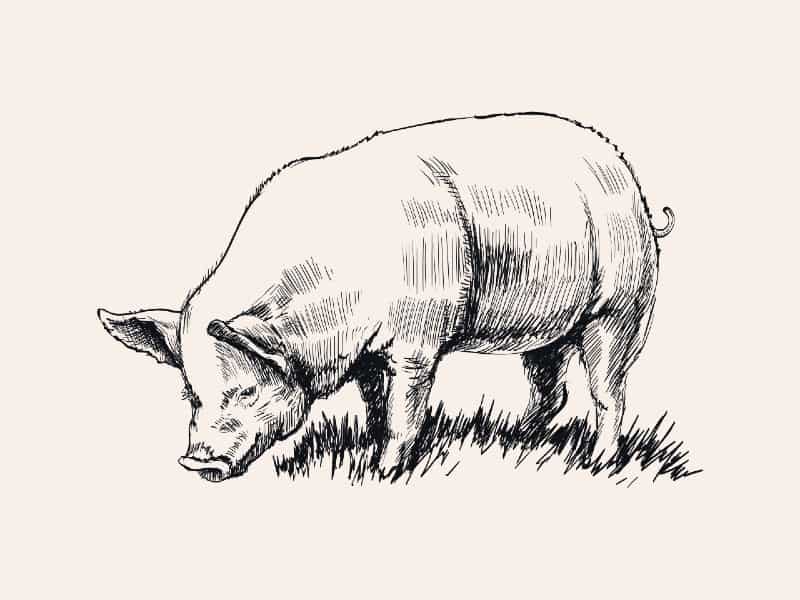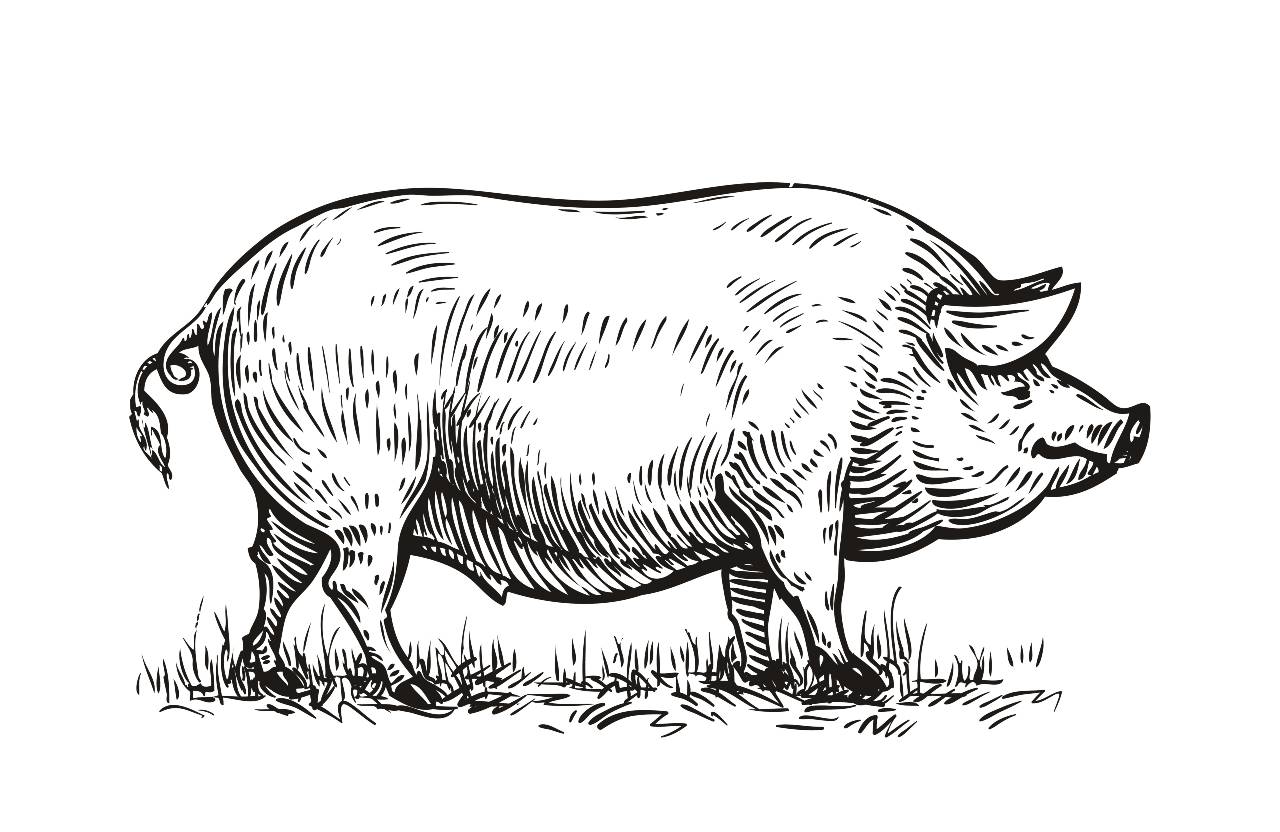 Source: https://design.tutsplus.com/tutorials/how-to-draw-a-pig–cms-30794If you’re struggling to draw a pig, that’s no surprise ““ they are very challenging animals to draw. Their body shapes don’t seem the most intuitive sometimes, and they have tricky ears and faces. Their legs are awkward too ““ all in all, it’s not easy to draw a pig.Fortunately, you can learn some great techniques that will make it easier ““ so let’s take a look at pig drawing easy tricks and tips.
Source: https://design.tutsplus.com/tutorials/how-to-draw-a-pig–cms-30794If you’re struggling to draw a pig, that’s no surprise ““ they are very challenging animals to draw. Their body shapes don’t seem the most intuitive sometimes, and they have tricky ears and faces. Their legs are awkward too ““ all in all, it’s not easy to draw a pig.Fortunately, you can learn some great techniques that will make it easier ““ so let’s take a look at pig drawing easy tricks and tips.
Materials
In order to draw a pig, you’ll require:
- A sharp pencil
- A good black fineliner
- Plain white paper
- A flat surface to lean on
- A ruler
- An eraser
Step 1: Draw The Body As A Rough Oval
To start off your little pig, you want to draw its body. Aim for a rough oval around the center of your page. The oval doesn’t need to be neat, and if you can make it slightly wider at the front, this will give your pig more perspective in the later steps. The wider part will be the front of the pig’s body.
Step 2: Add The Shoulders And Hips
Next, draw a long, thin oval overlapping with about one-fifth of the front of the pig’s body. This should be a bit taller than your first oval, but only a little. This is going to help you shape the pig’s front legs later.Next, draw a rough circle overlapping at the back of your pig’s body. This should be just under half the size of the body itself, and about half of it should overlap with the body (or a little under half). This is going to help with the pig’s rear legs as you continue drawing.
Step 3: Draw The Ground
It may help to give your pig something to stand on at this point; this doesn’t need to be fancy, but it will make it easier to get the legs in the right places. Use the ruler to draw a line straight down through the pig’s body, completely vertical.When you get to where the pig’s feet should be, draw a cross to show yourself how the floor will look. One line should run parallel with the pig’s body, while the other will give you depth. Have a quick look at some perspective tutorials if you need a hand with this.
Step 4: Draw Rough Legs
Put in four lines to give yourself an indication of where the legs will be. All four should gently curve toward the front of the pig’s body.
Step 5: Start Adding Muscle
Pigs are chunky animals, so you want to show their muscles. On the pig’s shoulder, draw two circles that approximately cover the oval you already put in place. The lower of these two circles should be slightly larger than the upper one. It’s fine if they overlap a little.Over your hip muscle, you’re going to draw a second circle, a bit smaller than the hip and slightly squashed. It should sit a little lower down than the hip; this is the large thigh muscle.
Step 6: Add The Head And Body
Sketch a big, rounded head in front of the pig’s legs, and draw along to smooth the pig’s body, filling in over the shoulders and between the body and hip. Sketch a little curly tail in place at the back.
Step 7: Work On The Legs
Draw a little circle in the middle of each front leg, and a slightly larger circle in the middle of the back legs. Sketch a semicircle at the bottom of each leg, and then fill in the line between this and the circles you’ve just drawn on the front legs; these are the pig’s hooves.On the back legs, the hooves should come about halfway up to the circles you just drew; you will then add smooth curves to finish the gap to the joint.Next, add muscles above the joint on each leg, and add toes to the back of the pig’s hooves. Give the hooves shape by dividing them into two trotters.
Step 8: Work On The Head
Draw a line that continues the shape of your pig’s body to guide you on where its head should go. A little “perspective” cross at the top should help you with positioning the features. Sketch a rough snout shape, aiming for a flat head at the top where the skull connects to the snout. Add a little triangle at the end of the snout to create the upturn of the pig’s nose. Draw a mouth and then a jaw underneath it, curving back to the pig’s neck.The eye sockets should be sketched as circles at the top of the snout. These are quite large and oval. Add smaller eyes within. Next, draw the ears as smoothed rectangles just above, and give them triangles that flop down towards the pig’s eyes.
Step 9: Add Detail
Your piggy is almost finished. Add some more detail on the head, accentuating the snout, giving him nostrils, and finishing off the curve of the tail. You can also add lines that suggest the pig’s leg muscles and perhaps a bit of chubbiness around the neck.Shade the inner part of the back foreleg and back rear leg, and add a bit of shadow along the lower stomach, neck, snout, ears, and face. This should make your pig look and feel more 3D. Erase any extra lines that represent the original guides we drew, such as the shoulder muscles, etc.
Step 10: Outline Your Pig
Once you’re happy with how your pig looks, you can outline it with a black fineliner if you want to. This isn’t essential, however, so if you prefer your pig in pencil, that’s fine too.
Conclusion
Hopefully, you’ve got a pig to be proud of. Don’t worry if you feel you could do better; there’s always next time. Keep practicing and praising yourself for your efforts. Pigs are a majorly challenging thing to draw, so don’t be discouraged even if you aren’t very happy with your drawing.Try looking at some pictures of pigs online and have another go!
Comments
0 comments


